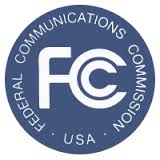Many consumers find unwanted email – which can include commercial messages known as spam – annoying and time-consuming. The Controlling the Assault of Non-Solicited Pornography and Marketing (CAN-SPAM) Act – addresses spam. This legislation is applicable to the US, i.e. to US based recipients regardless of where the email originated. Any marketeer or sales professional operating in the US therefore needs to be fully aware of the legislation and its implications.
The CAN-SPAM Act of 2003, signed into law by President George W. Bush on December 16, 2003, establishes the United States' first national standards for the sending of commercial e-mail and requires the Federal Trade Commission (FTC) to enforce its provisions.
The CAN-SPAM Act defines commercial messages as those that primarily advertise or promote a commercial product or service.
The FCC’s ban does not cover “transactional or relationship” messages -- that is, notices to facilitate a transaction you have already
agreed to -- for example, messages that provide information about your existing account or warranty information about a product you’ve
purchased. The FCC’s ban also does not cover non-commercial messages, such as messages about candidates for public office.

For commercial email, your consent may be oral or written. Senders must tell you the name of the entity that will be sending the messages and, if different, the name of the entity advertising products or services. All commercial email messages sent to you after you’ve given your authorization must allow you to revoke your authorization, or “opt out” of receiving future messages. Senders have 10 days to honor requests to opt out.
You can reduce the number of unwanted emails you receive by taking these precautions and actions:
Enjoy !
Get an Email Address Encryption key for the WEBEMAILPROTECTOR service and secure your website email addresses here GET-A-KEY page.
Post your comments here!